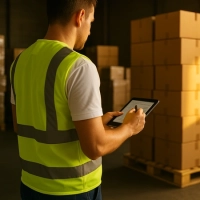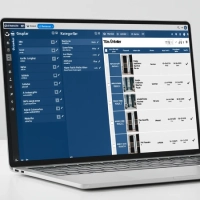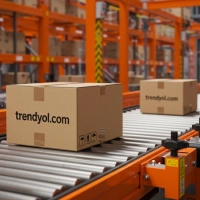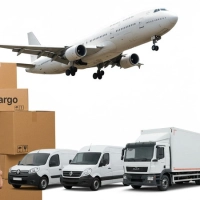
A quick search on opening a virtual store will typically yield results like opening a virtual shop, opening an online store, opening an online store, opening a virtual marketplace, and establishing a virtual market. To avoid confusion, I want to point out that these terms actually mean the same thing.
In our country and globally, where digitalization is rapidly spreading, the amount of shopping done through digital channels has increased by 30% in the last five years. Therefore, if you're looking to open a virtual store to sell your products or services, you should consider the suggestions we'll offer in this article.
How to Open a Virtual Store? Where and How Should You Start?
As we mentioned at the beginning of this article, you first need some infrastructure to open a virtual store. If you're unsure where to start, you can request a demo by clicking here and have a look at the infrastructure you'll need to open a virtual store.
Suggestions for Those Who Want to Open a Virtual Store
1- Share Your Virtual Store Address with Your Friends
Social media platforms are undoubtedly one of the most important ways to increase brand awareness today. You should frequently share your virtual store address on Facebook, Twitter, Instagram, Pinterest, and other social media accounts to ensure it stays in people's minds.
2- Use Google Adwords and Facebook Ads
Today, the vast majority of online ads are run on Google and Facebook. Ads planned according to your budget are charged per impression or click, allowing you to customize your target audience selection.
3- Create Surprises and New Things
You've laid the groundwork, but now the real work begins. To build your audience and encourage them to buy, you can run various campaigns, offer discount vouchers, and rewards for regular customers. This is the promotional phase of marketing, and you can send your products to well-known bloggers and authors for review and encourage them to write about you.
4- Prepare Infographics and Social Media Posts
Infographics are graphical representations of information and data about your product, providing potential customers with a visual aid. They are an effective advertising tool. Sharing infographics on your social media accounts will encourage visitors to visit your online store.
5- Embrace Videos
Don't underestimate the power of a video that conveys a positive message and effectively promotes your product. While it might seem like the most important part is opening a virtual market, it's up to you to make an impact on the viewer by conveying the right message while promoting your products.
6- Create a Blog and Produce Content
A blog is one of the most challenging yet rewarding areas of a website. You can extend the time visitors spend on your site by providing them with useful information, increasing your chances of generating sales through various strategies, and demonstrating that you are a website that is constantly updated and worthy of a high ranking by search engines.
7- Make sure to have a business card made
Business cards are tiny, untraceable advertisements. Give them out whenever you have the opportunity. Make sure your card matches your website and corporate identity.
8- Generate Coupon Codes and Try Campaigns
Campaigns and discount coupons are essential in today's e-commerce ecosystem. Considering that everyone is looking for ways to make their shopping more affordable, you can encourage a significant audience to shop on your website with the campaigns you create and the discount coupons you distribute.
With Comwize, Türkiye's first and only e-commerce ERP software, it's incredibly easy to open a virtual store, a virtual shop, an online store, an online shop, a virtual marketplace, or a virtual market. It includes all the modules and services you need behind the scenes, as well as a stylish e-commerce website, so all you have to do is focus on your sales.

























